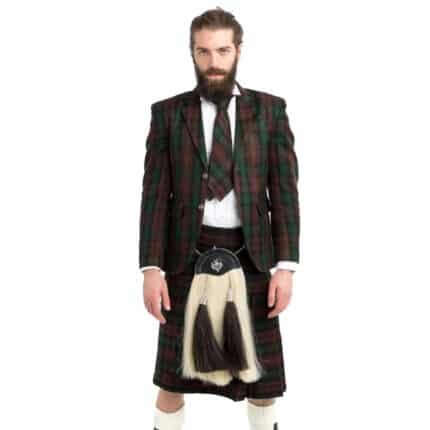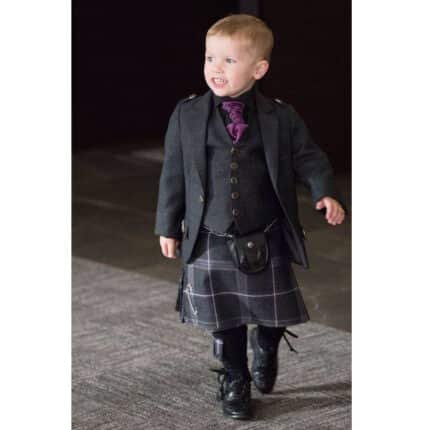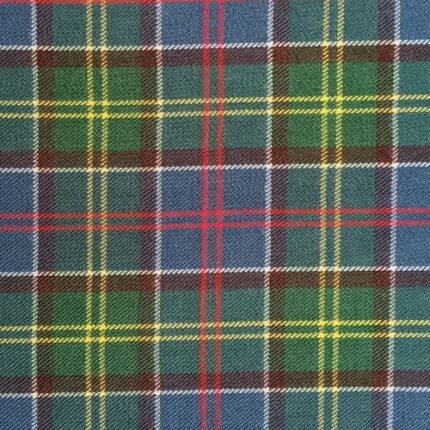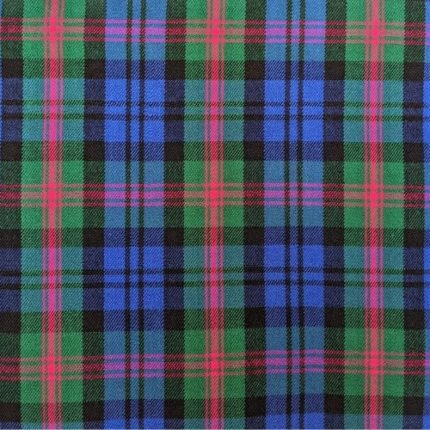How to wear a kilt hose?
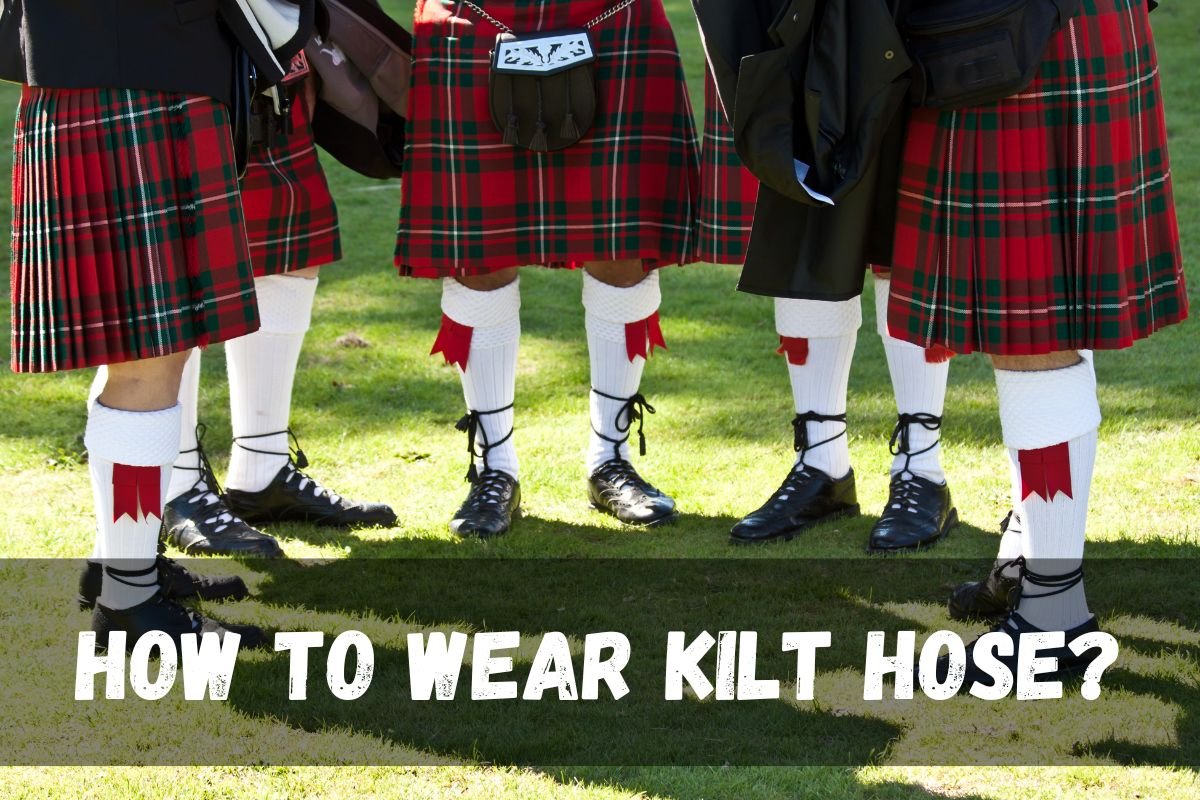
Introduction
Brief Overview of Kilt Hose and Its Significance in Scottish Attire
Kilt hose, a quintessential component of traditional Scottish dress, holds a rich history deeply intertwined with the cultural heritage of Scotland. These specialized socks, often made of wool, play a vital role in completing the iconic ensemble of Highland attire. Originating from the need for practicality and warmth in the rugged Scottish climate, kilt hose have evolved into a symbol of national identity and pride.
Historically, kilt hoses were crafted from natural fibers such as wool, chosen for their insulating properties and durability. The design typically features intricate patterns, reflecting the skilled craftsmanship passed down through generations. Today, while modern materials and manufacturing techniques offer a wider array of options, the essence of tradition remains intrinsic to the design and significance of kilt hose.
Importance of Proper Kilt Hose Etiquette
In Scottish culture, the wearing of kilt hose is not merely a matter of fashion but a display of respect for tradition and adherence to etiquette. Properly worn kilt hose signifies attention to detail and a commitment to honoring Scottish heritage. Whether donned for formal events like weddings, ceilidhs, or Highland gatherings, or worn casually for everyday attire, observing kilt hose etiquette is paramount.
Adhering to the correct length, fit, and style of kilt hose demonstrates a level of reverence for the cultural significance of Highland dress. Furthermore, understanding the nuances of pairing kilt hose with the rest of the outfit showcases an individual’s understanding of Scottish sartorial customs. Just as one wouldn’t wear a sporran incorrectly or misalign a tartan, wearing a kilt hose with precision is integral to upholding the integrity of the attire.
Purpose of the Guide
The purpose of this guide is to provide comprehensive instruction and insight into the art of wearing kilt hose with precision and confidence. From selecting the appropriate material and style to mastering the technique of donning and caring for them, this guide aims to equip enthusiasts and novices alike with the knowledge needed to embrace Scottish tradition with authenticity.
Aberdeen (Johnston and Smith) Tartan
$22.00Aberfeldy Tartan
$22.00Argyle Jacket And Kilt Outfit
Original price was: $450.00.$419.00Current price is: $419.00.Argyle Jacket Kilt Outfit
Original price was: $450.00.$419.00Current price is: $419.00.Argyle Tartan Kilt Outfit
Original price was: $550.00.$509.00Current price is: $509.00.Argyll Jacket Kilt Outfit For Kids
Original price was: $299.00.$249.00Current price is: $249.00.Ayrshire Tartan
$18.00Baird Tartan
$14.00Banff And Buchan District Tartan
$18.00
Understanding Kilt Hose
Definition and History of Kilt Hose
Kilt hose, a quintessential element of traditional Scottish attire, refers to the socks worn with a kilt outfit. They are designed to be worn knee-high and are an integral part of Highland dress, completing the ensemble with both functionality and style. Historically, kilt hose evolved from earlier forms of legwear in Scotland, adapting to the needs and aesthetics of Highland culture. Originally made from natural fibers like wool, their purpose was to provide warmth and protection during the harsh Scottish weather while showcasing clan tartans and patterns. Over time, kilt hose has become synonymous with Scottish identity, embodying centuries of tradition and craftsmanship.
Different Types of Kilt Hose Materials
Kilt hoses are crafted from a variety of materials, each offering distinct characteristics in terms of comfort, durability, and aesthetics. Traditional kilt hose are typically made from wool, prized for its warmth, moisture-wicking properties, and natural elasticity. Wool kilt hoses are favored for formal occasions and colder climates, providing both insulation and breathability. In contrast, contemporary options include acrylic and cotton blends, which offer lighter weight and easier maintenance while retaining the classic look of wool. Acrylic kilt hose are often chosen for their affordability and resilience to wear and tear, making them suitable for everyday wear or casual events. Cotton kilt hose, though less common, offers a cool and breathable alternative, ideal for warmer climates or indoor settings.
Traditional vs. Contemporary Styles
The world of kilt hose encompasses a spectrum of styles, ranging from traditional designs rooted in centuries-old techniques to modern interpretations influenced by contemporary fashion trends. Traditional kilt hoses typically feature intricate cable knits, argyle patterns, or ribbed textures, reflecting the rich heritage of Scottish craftsmanship. These designs are characterized by their timeless elegance and attention to detail, making them ideal for formal occasions such as weddings, ceilidhs, or Highland games. On the other hand, contemporary styles offer a fresh take on kilt hose, incorporating bold colors, subtle embellishments, and innovative materials to suit diverse tastes and preferences. Whether opting for a classic look or embracing a more modern aesthetic, the key lies in selecting a kilt hose that complements the overall outfit while staying true to personal style and cultural heritage.
Choosing the Right Kilt Hose
Considerations for Material, Length, and Color
When selecting a kilt hose, it’s essential to prioritize both style and functionality. Opting for high-quality materials such as wool, acrylic, or a blend of natural and synthetic fibers ensures durability and comfort. Wool is a traditional choice, known for its warmth and moisture-wicking properties, while acrylic offers a lighter alternative. Additionally, consider the length of the hose, which typically extends to just below the knee. Ensure a proper fit to avoid sagging or bunching. Color coordination is crucial for achieving a cohesive look. Traditional options include neutral tones like black, charcoal, or off-white, but don’t shy away from exploring more vibrant hues to complement your attire.
Matching Kilt Hose with the Rest of the Outfit
Harmonizing your kilt hose with the overall ensemble is key to achieving a polished appearance. Coordinate the color and texture of the hose with the kilt fabric, jacket, and accessories. For formal occasions, opt for subdued colors that complement the tartan pattern of the kilt. Alternatively, experiment with contrasting shades or subtle patterns for a more contemporary twist. Remember to maintain balance and avoid overwhelming the outfit with overly bold choices. Ultimately, aim for a cohesive look that exudes sophistication and attention to detail.
Ensuring Comfort and Durability
Comfort and durability are paramount when it comes to kilt hose, especially considering the extended wear during events or gatherings. Prioritize breathable materials that offer sufficient ventilation to prevent discomfort or excessive sweating. Seamless construction and reinforced heels and toes contribute to longevity and minimize the risk of premature wear and tear. Additionally, opt for a kilt hose with a snug yet comfortable fit to prevent slippage or discomfort throughout the day. Investing in a well-crafted kilt hose not only enhances your overall attire but also ensures long-term satisfaction and confidence in your appearance.
Proper Preparation
Wearing Appropriate Undergarments
Before donning your kilt hose, ensure you are wearing suitable undergarments that provide support and comfort. Traditional options include briefs or boxers made from breathable fabrics such as cotton or linen. Avoid bulky or ill-fitting undergarments that may create visible lines or discomfort. Properly fitting undergarments lay the foundation for a streamlined and polished look when wearing kilt hose and other Scottish attire.
Ensuring Clean and Well-Maintained Kilt Hose
Maintaining clean and well-maintained kilt hoses is essential for preserving their appearance and integrity. Regularly wash your kilt hose according to the manufacturer’s instructions to remove dirt, sweat, and odors. Handwashing with mild detergent is typically recommended to prevent damage to delicate fibers. Avoid wringing or twisting the hose excessively and allow them to air dry thoroughly before storage. Inspect the hose for any signs of wear or damage, such as holes or loose threads, and address them promptly to prolong their lifespan.
Adjusting Sock Garters for a Secure
Fit Properly adjusting sock garters is crucial for ensuring a secure and comfortable fit throughout the day. Position the garters around the upper calf, just below the knee, ensuring they are snug but not overly tight. Adjust the tension to provide sufficient support without constricting circulation. Double-check the placement to ensure the garters are evenly aligned and secure. Properly adjusted sock garters prevent the kilt hose from slipping or sagging, maintaining a polished and professional appearance.
Step-by-Step Guide to Wearing Kilt Hose
Rolling down the top of the kilt hose:
Before putting on your kilt hose, it’s essential to roll down the top cuff to create a comfortable and neat fit around your calf. Begin by gently rolling down the cuff of the hose until it reaches just below your knee. Take care not to fold or bunch the fabric unevenly, as this can lead to discomfort and an unsightly appearance. The rolled-down cuff should rest smoothly against your skin, providing a secure foundation for the rest of the sock.
Folding the cuff correctly:
Once the top cuff is rolled down, it’s time to fold it over to create the distinctive cuff that is characteristic of a traditional kilt hose. To do this, carefully fold the top edge of the cuff down towards the ankle, ensuring that the fold is even and tidy. The width of the cuff can vary depending on personal preference and the length of the hose, but a typical width is around two to three inches. Take care to smooth out any wrinkles or creases in the fabric, as these can detract from the overall appearance of the sock.
Adjusting the height to the knee:
After rolling down the cuff and folding it over, it’s important to adjust the height of the kilt hose to ensure that it reaches just below the knee. This is a crucial step in achieving the traditional Highland look, as the hose should sit at the perfect height to complement the rest of your Scottish attire. Take a moment to carefully pull up the hose, making any necessary adjustments to ensure that it sits evenly and securely around your calf. The hose should be snug but not too tight, allowing for comfortable movement without slipping down throughout the day.
Securing with sock garters:
Once the kilt hose is properly adjusted, it’s time to secure it in place with sock garters. These elastic bands are worn around the top of the calf, helping to prevent the hose from slipping down and maintaining a neat appearance. To use sock garters, simply attach one end to the top of the kilt hose and the other end to the bottom of the cuff, ensuring that they are adjusted to the appropriate tension. Take care not to fasten the garters too tightly, as this can restrict circulation and cause discomfort. With the sock garters in place, your kilt hose will stay securely in position, allowing you to move with confidence and style throughout the day.
Styling Tips and Tricks
Matching kilt hose with kilt and other attire:
When it comes to selecting a kilt hose, it’s important to consider how they will complement the rest of your Scottish attire. Choose a color and style that coordinates harmoniously with your kilt, sporran, and jacket, creating a cohesive and polished look. Traditional options include solid colors like black, navy, or green, but don’t be afraid to experiment with tartan patterns or subtle accents for a modern twist. Ultimately, the key is to choose kilt hose that enhances the overall aesthetic of your outfit, reflecting your style and appreciation for Scottish tradition.
Incorporating accessories like flashes and sgian-dubhs:
To elevate your kilt hose ensemble, consider incorporating accessories like flashes and sgian-dubhs. Flashes are decorative garters that are worn just below the knee, adding a touch of elegance and flair to your Highland attire. Choose flashes that complement the color and pattern of your kilt hose, creating a cohesive and polished look from head to toe. Similarly, a sgian-dubh is a traditional Scottish dagger that is often tucked into the top of the kilt hose, serving as both a practical tool and a stylish accessory. Opt for a sgian-dubh with a handle and sheath that coordinate with the rest of your outfit, completing the Highland look with finesse and authenticity.
Adding personal flair while respecting tradition:
While it’s important to respect traditional Highland attire, don’t be afraid to add your own personal flair and creativity to your kilt hose ensemble. Whether it’s a subtle pop of color, a unique pattern, or a playful accessory, incorporating elements of your own style can make your outfit truly memorable and distinctive. Consider adding a personalized touch with embroidered initials, clan crests, or other meaningful symbols, celebrating your heritage and individuality with pride. By striking a balance between tradition and innovation, you can create a kilt hose ensemble that is both timeless and uniquely yours, embodying the spirit of Scottish culture with confidence and panache.






